In part, continued on from the previous post on expressway buses
Another common tripe, this time an international one, against improvements of buses usually lie in the problem of “distribution”, a question as to how resources for “improved buses” should be distributed across the city, as well as tons of questions relating to access to said improved system. (By “improved” buses here I refer to any kind of improvements to bus service, such as rapid stopping, Bus Rapid Transit, among others. Fundamentally I believe these improvements are of the same essence, merely differing in order of magnitude.)
This problem, in its essence, boils down simply to a question of the “exclusivity” of said bus service improvements. Or, in short, how distinct these improved buses should be from their unmodified, normal counterparts. Even many (with respect, I say) highly-qualified transit planning professionals sometime fall victim to this certain notion that “improved” buses must have an emphasised distinction at the fundamental level, thereby resulting in a “separation” between the “rapid/BRT/whatever” and “conventional bus” systems.
In the West, this deeply-entrenched belief has multiple ramifications for the overall public transport network on a planning level. Firstly, there’s endless debate among circles in the not-so-well-developed liberal Western (excludes continental Europe, that is.) nations as to whether BRT busways should be “open” or “closed”. Whether there should be exclusive “branding”, “amenities”, emphasis on “experience” specific to upgraded systems only (or as a former Mayor for Canberra put it, “making BRT almost as sexy as light rail”). And when the initial segments of an upgraded bus system get put into use, nasty human emotions (i.e. envy) kick in, and soon everyone demands upgrades to the buses at their doorstep, simply in order to leave behind the “normie” and join the “exclusive”. It could have been possible to just run the buses more frequently, but eh, there simply isn’t the allure of the “brand”, nahhhhh we’re not gonna stop till we get “exclusive” too. Thus deployment by technology in places where it wouldn’t make sense, (e.g. building an MRT line to connect the zoo to Yishun and Choa Chu Kang) eventually leading to the overall failure of the system, resulting in what could have been an improvement to the bus system, eventually flopping due to petty branding issues mixed with public perception. Case in point: Los Angeles once ran rapid-stop bus services, but then through the compulsion to bring the “exclusive” Rapid buses everywhere eventually resulted in the Rapid option performing worse than the local-stop options!

These noble plans to improve public bus transport did not fail. And the fall of Rapid service in LA and elsewhere should definitely not be taken as a failure of the broad idea of bus improvement in general!
(Rather, it should be seen as an example of how human negativities hijacked the trajectory of the implementation of an otherwise excellent means of improving public transport overall, by demanding that it go to places where it would perform sub-optimally!)
Why was there such an intense human reaction to wanting “Rapid” bus service implemented everywhere? Because the moment the transit agencies began “branding” these bus service improvements as something distinct from the existing system, naturally what tends to happen (for those who aren’t really very analytical with transit matters) is that the branding gets associated with the service improvement (i.e. branded = confirm must be better than “unbranded”), and the reverse will also hold for many of them: unbranded is necessarily worse than the branded option. As demonstrated in examples from the Western Hemisphere (above), this eventually leads down the spiral of what Jarrett Walker calls “dilution” of quality.
All because of system separation between typical bus and “improved bus” (in any aspect), and an intent to highlight the differences, supposedly as a marketing tactic. Thankfully in Singapore we haven’t gotten to this yet, though hype for the 3-door and electric bus models (in the bus comm) could probably count as such? In short, the practice of BRT implementation in Western contexts is one of making them exclusive from the rest of the bus system.
Of course, there are other caveats to system separation of BRT/improved buses from conventional buses as well. Other actions taken as a result of making bus improvements “exclusive”, would involve fleet separation, and in the case of BRT, infrastructure separation as well (i.e. BRT has its own lane and conventional buses still made to sit in mixed traffic, no mixing between BRT and conventional buses), both of which necessarily involving the formation of excessive, unnecessary barriers to integrated operations (BCM being a local example increasingly stifling the ability to do cross-depot collaboration). By creating separate fleets for “improved buses”, as is the case of the Metro Rapid in LA, it comes at the expense of being able to operate across different types of bus routes! Whereas for “closed” BRT systems, forming that “distinction” between BRT and conventional bus sends across a message, especially if the “improvement” to certain buses comes alongside trashing others, that the “conventional” bus isn’t valued. In the case of fully-separated BRT, there’s also the risk of worsening service quality on conventional buses as the reduction of lanes available for general traffic (that conventional buses use) would exacerbate traffic. While it’s meant to push motorists towards taking the BRT, it might just squeeze ridership out of conventional bus systems too not unlike what bus (ir-)rationalisation did here.
(Of course, fleet separation isn’t necessarily a bad thing if we use the separation to optimise operations for certain types of bus routes, such as maintaining separate fleets for trunks, feeders, and the like, but problems do arise when fleet separation is done to maintain a certain brand. *cue Seoul*)
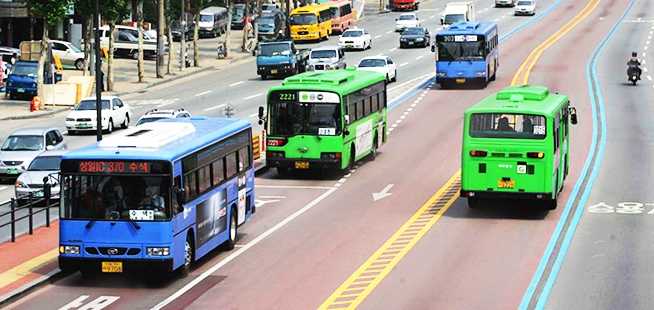
You don’t need to brand bus improvements. Seriously.
Here are three buses. Without doing reverse image search, figure out which belongs under the “BRT” system, and which belongs to the conventional fleet. Hint: only one of them is under the “BRT” fleet.

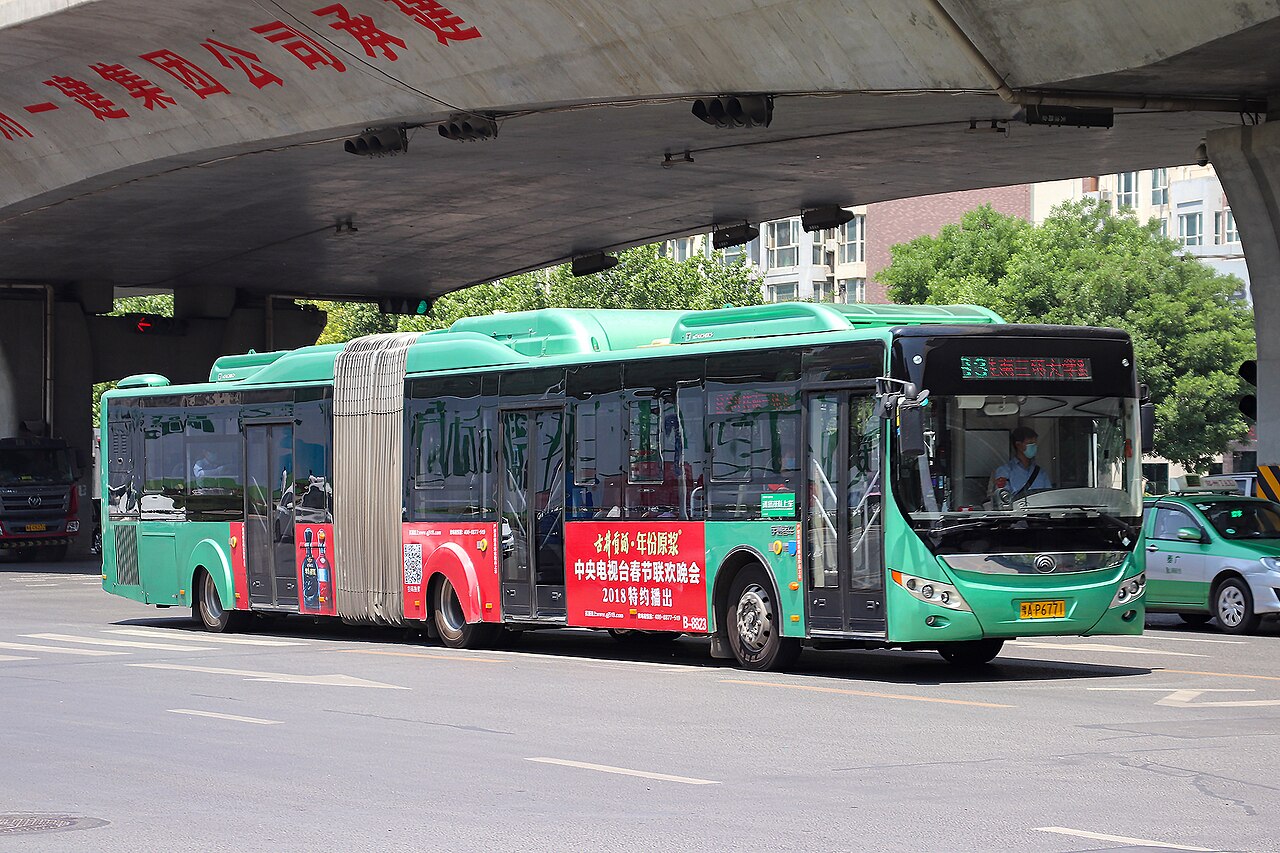

I’ll insert a placeholder image so you don’t get to peek at the answer 🙂

Answer: Only the middle bus (green bendy) is actually under the BRT system.
And thus, I welcome you to Zhengzhou, where the “BRT” and “conventional bus” systems exist as one unified entity!
I’ve shat enough on the Western way of doing bus improvements. So, how does the Zhengzhou BRT operate in relation to the “normal” 郑州公交 (Zhengzhou Bus)?
Unlike most other BRT systems which operate as isolated trunk routes, trying desperately to be like trains (or “pretend to be trains”), thus ending up in most cases as a few scattered and disjoint routes (LA Orange, Boston Silver, Chengdu B1 lines, cough.), what happens in Zhengzhou instead is that the BRT system is integrated. Not just integration between lines, but also integration with the overall bus network as a whole! What this means, is that instead of thinking of BRT lines as “lines” running one or two services each, Zhengzhou leans towards thinking of their BRT lines as “corridors” with multiple services flowing through the corridor, entering and leaving at different points!
(A note: The FTRL blog apparently thinks the idea of BRT and related bus lane schemes is “buses pretending to be trains” (sic.). Utterly wrong. Bus Rapid Transit and busways are not buses pretending to be trains! Rather, their purpose is to add capacity to the overall transport network and be a network densifier for fast travel! BRT has the advantage of being flexible (but only in the open configuration used in systems like Zhengzhou), something that should be adequately exploited for maximum return!)
This critical difference in BRT network design is exemplified in the picture below.

(By the way, the light blue line avoiding the center station is a physical limitation as the route switches between BRT corridors)
The key benefit of integrating the BRT system with the conventional bus system lies in this — the ability to bring the benefits of the BRT system to your doorstep!
You see, whereas in closed and exclusive BRT, you would still need multiple transfers to get to the BRT line itself because operational considerations would dictate against extending BRT lines “to where it is unfeasible”, with an open and integrated bus system the BRT is able to flow out, thus effectively expanding coverage without extending the infrastructure. (Another example of service-before-infrastructure thinking.)
This also means it’s possible to find on one single BRT corridor a multitude of services serving various sections and then divulging off to continue on another busway, or into general traffic serving non-busway regions! In the above infographic I’ve shown, while the extent of the busway infrastructure remains the exact same (the red and green lines in the upper half of the image), the extent of improved bus service is greatly expanded beyond the infrastructure itself!
In Zhengzhou, one may typically find the following types of services upon showing up at the local BRT station:
- Feeders that only serve one or two BRT stations and then run off into some neighbourhood estate
- Trunks that use certain portions of the busway route
- Rapids that act like trunks but do limited stopping
- The BRT line itself that provides added service on the corridor
This practice also resolves the critical issue of distinction between conventional and improved buses, because when conventional buses are also able to use the BRT infrastructure, it really blurs the line between what is considered “conventional” and “improved” bus, because there really isn’t much difference between the two – you can’t exactly tell them apart! In Zhengzhou they take this a step further — since the BRT and bus systems share the same operator, effort is taken to do the opposite of what Western BRT (and “bus improvement”) systems do — messaging that the BRT and conventional bus belong under the same system, and perhaps the biggest example of this I have shown earlier — by using the exact same vehicles that look alike with identical liveries (all in the same red, green, or gold official liveries), it further drives home the idea of BRT and conventional bus being one. You really couldn’t tell which of the three were BRT, right?
By the way, if you were wondering why the last pic (green rigid on “B35”) wasn’t a BRT bus — well technically two-digit “B” routes are “trunks” utilising portions of the BRT system, and only single-digit “B” routes (B1 through B5) are the actual “BRT” routes that stay fully within the busway system.

How does the Zhengzhou BRT manage to achieve technical compatibility between the conventional and BRT bus systems though? Well through a few hacks that I wished other BRT systems would adopt.
The first, is to lower the curb height of BRT stations, to the same level as conventional buses.

It is the first step in removing the access barrier of the conventional bus fleet to the BRT infrastructure and what allows for seamless connection between the BRT and bus network.
And a second feature that I really wish Singapore adopted: doors on both sides
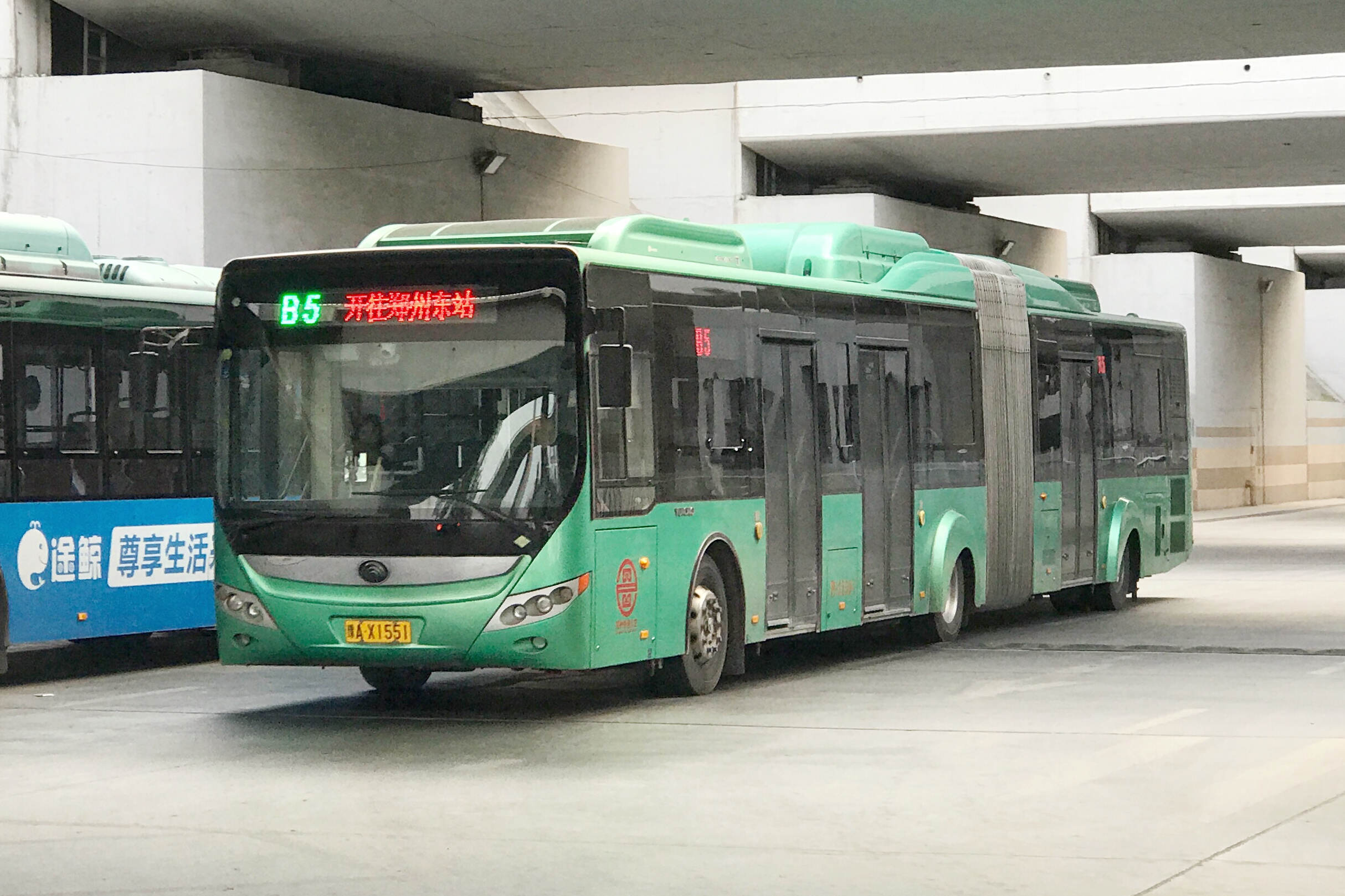
In earlier bus-related posts, I’ve talked about my preference for running bus lanes down road and expressway medians. Why is that so? Perhaps the most important reason of all lies in the fact that the median lanes in any road are where the fastest-flowing traffic is, for good reason. Lanes nearer the sidewalk may get cluttered up occasionally by things like roadside parking (especially in places near malls and the like where this can get unwieldy at times), and taking the outermost lanes in a road to give to buses will understandably raise the ire of many motorists because the outermost lane is nevertheless important for purposes such as brief drop-offs and pick-ups (freight vehicles too!), especially if we speak of physically separated bus lanes! And there’s the symbolism involved too – – inner lanes are typically “fast lanes”, so putting a bus lane there sort of reminds people of the speed benefit BRT brings about.
Yet if we adopt median running for our bus lanes, we inevitably run into the problem of how the stops should be placed. In most places where we don’t have that much space to do two side platforms in the middle of a road to spare, the logical answer is thus island platforms on the road median, connected to both sides of the road by a footbridge.
This runs us into another problem: What about the bus doors? Usually bus doors face the sidewalk side, which is the left or the right depending on which side you drive on in a particular country. However in an island platform situation for buses, you’ll pull up to the station with the all-windows side facing the platform. Not ideal.
Hence — buses with doors on both sides! An added benefit of doing so is the capacity improvement this brings about, since doors clear more space and require the removal of seats! Of course, like any BRT system that is to be respected — all-door boarding is the way here.
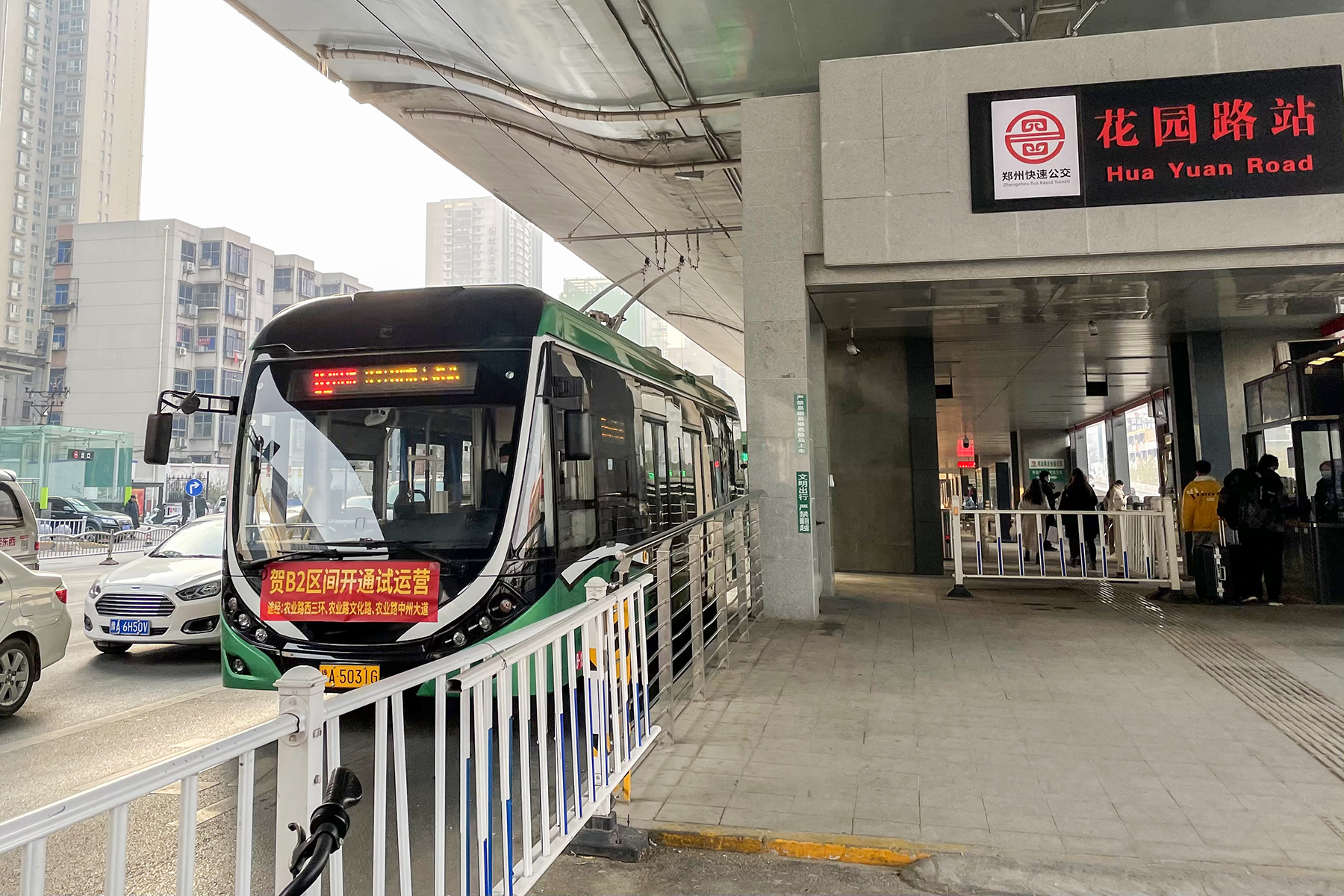
The Zhengzhou BRT system is definitely something that admirably is able to avoid the pitfalls that eventually lead to BRT creep — by expanding the service beyond the infrastructure, it effectively (in terms of cost and benefit) brings about maximum service benefit to as many passengers as possible without compromising on quality by too much!
As a testament to its success, the Zhengzhou Metro is still quite young, yet it with its equally-pathetic-as-us 6-car trainsets aren’t getting overwhelmed by overcrowding despite Zhengzhou having a population of 10.4 million, more than double that of Singapore’s!
A living proof, that good buses don’t have to be exclusive. Every bus can be as good as the BRT. It’s only a matter of whether you want it to be.
I present to you once again, Zhengzhou BRT.
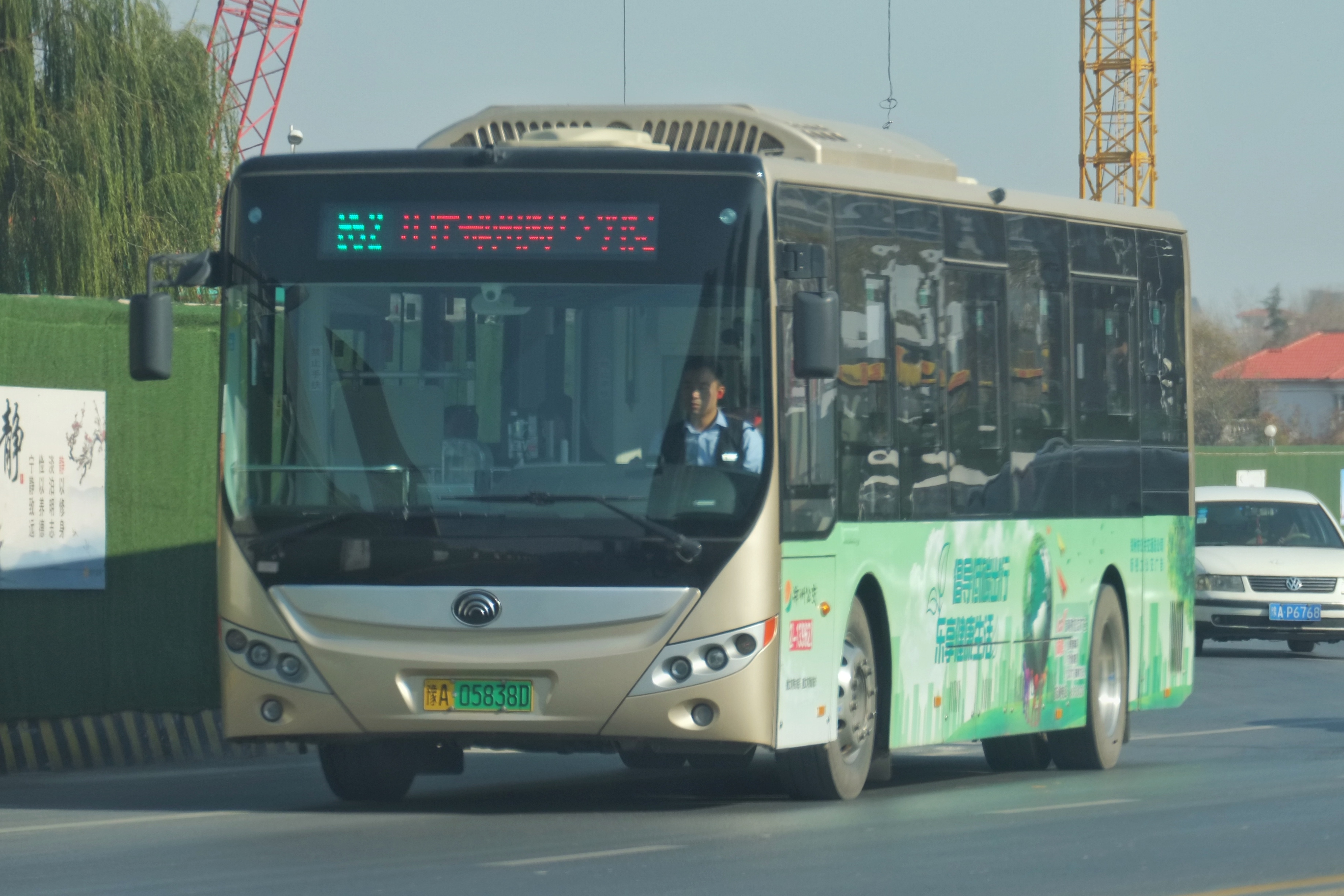
Liked this article? Sub, like and share this post, to spread the love around! E:3


15 thoughts on “Good buses don’t have to be exclusive”